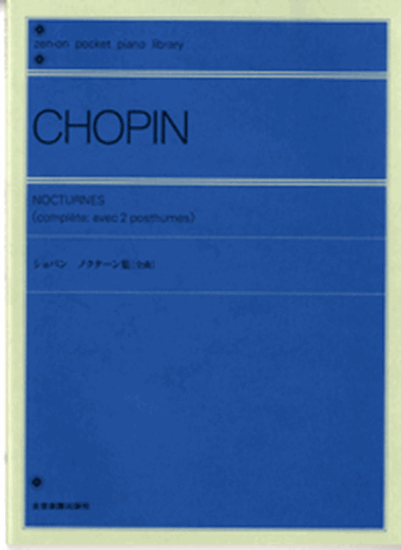Chopin, Frederic : Nocturne No.13 c-moll Op.48-1
Work Overview
Genre:nocturne
Total Playing Time:6 min 00 sec
Copyright:Public Domain
Commentary (1)
Author : Ueda, Yasushi
Last Updated: January 1, 2010
[Open]
Author : Ueda, Yasushi
Deux Nocturnes Op.48
The composition period of these two nocturnes varies among researchers, but they were composed in 1840 or 1841, and the first editions were published in Paris (M. Schlesinger, 1841), Leipzig (Breitkopf und Hartel, 1842), and London (Wessel & Stapleton, 1842). They are dedicated to his pupil, Mademoiselle Laure Duperré. Autograph manuscripts have not been found. Both works are masterpieces that strongly reflect the influence of opera.
No. 13 in C minor
This work differs from other nocturnes in that it introduces a symphonic writing style reminiscent of a theater orchestra, aiming for operatic effects.
The entire piece consists of three distinct sections (hereinafter A, B, A'), separated by double bar lines. The initial theme features widely leaping chords in the left hand, enriching the harmony of the bass and middle voices. This accompaniment pattern is a characteristic writing style of the late nocturnes, also seen in Op. 55-1 (No. 15) and Op. 62-2, where Chopin pursues symphonic effects on the piano. This is likely related to the characteristics of instruments of that era, which allowed for richer bass tones. The range of section A largely corresponds to that of a soprano, and the melody reaches its climax and the note C at the end of section A (measure 21).
In section B, in C major, a quiet chorale contrasts with a dynamic succession of octaves. In A', the opening “melody” reappears, but this time accompanied by repeated chords and arpeggiated chords with double stops in the left hand. This type of repeated chord is a writing style often used to represent orchestral tremolo string accompaniment on the piano. Here too, unlike other nocturnes, the right-hand “melody” never exceeds the note C. This suggests that the right-hand melody was consistently written with a soprano singer in mind.
The chorale heard in B was also used in Op. 15-3 (No. 6) and Op. 37-1 (No. 11), but between the quiet soprano solo of A and the passionate finale of A', its religious and meditative atmosphere is particularly prominent. From the perspective of its writing style and dramatic quality, this nocturne can be regarded as an opera for piano consisting of three scenes.
¹ Jean-Jacques Eigerdinger, Chopin vu par ses eleves (3rd edition, Neuchatel, 1988), translated by Jiro Yoneya and Koji Nakajima, Tokyo: Ongaku no Tomo Sha, 2005.
PTNA & Partner Channel Videos(11items) View More
- favorite_border
- 0
Recording Date: 2021/7/31
Recording Location: 上野学園石橋メモリアルホール(2021年ピティナ・ピアノコンペティション 特級 二次予選)
- favorite_border
- 0
Recording Date: 2023/3/23
Recording Location: 東音ホール(公開録音コンサート 第279回)
- favorite_border
- 0
Recording Date: 2025/2/11
Recording Location: J:COM浦安音楽ホールコンサートホール(第48回ピティナ・ピアノコンペティション特級ガラコンサート)
Sheet Music
Scores List (14)

(株)全音楽譜出版社

(株)全音楽譜出版社

(株)リットーミュージック

ハンナ(ショパン)

(株)ドレミ楽譜出版社

(株)音楽之友社

(株)全音楽譜出版社

(株)音楽之友社

(株)全音楽譜出版社

(株)全音楽譜出版社

(株)全音楽譜出版社

ポーランド音楽出版社

(株)ヤマハミュージックエンタテインメントホールディングス

(株)音楽之友社
















